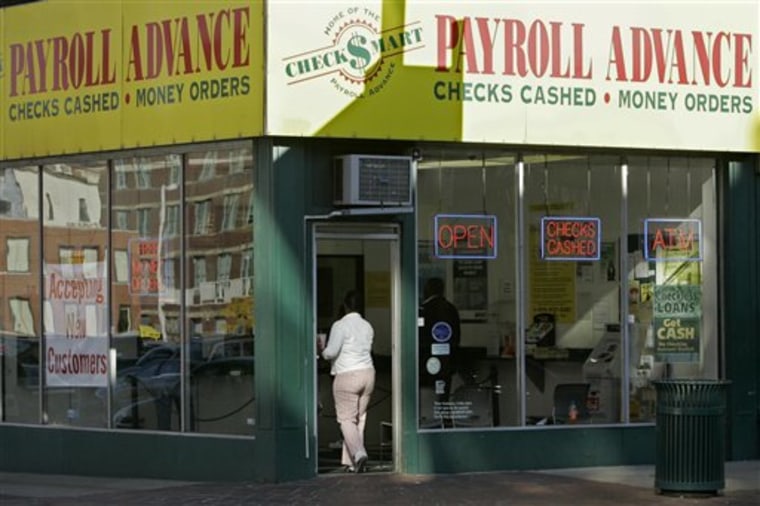More than a million American households lost access to basic banking services like savings accounts last year, bank regulators say.
Those families are among 30 million households that have little or no access to such services, according to a survey released Wednesday by the Federal Deposit Insurance Corp. Poor, minority and immigrant families are especially hard-hit.
In all, 25.6 percent of U.S. households either lack bank accounts or use payday loans, check-cashing services and other costly alternatives to traditional banks, according to the survey.
The report is part of an FDIC effort to bring the so-called "unbanked" into the financial mainstream.
FDIC Chairman Sheila Bair said access to a bank account gives households "an important first step toward achieving financial security." Vulnerable families need the ability to save for emergencies and borrow on affordable terms, she said in a statement.
"By better understanding this group — who they are and their reasons for being unbanked or underbanked — we will be better positioned to help them take that first step," Bair said.
Households are considered "unbanked" if they report that no member has a checking or savings account. "Underbanked" households have bank accounts but still rely on costly, lightly regulated services like payday loans, check-cashing services and pawn shops.
The survey found that black, Hispanic and native American families are more likely to fall into these categories. Seventy-one percent of unbanked households earn less than $30,000 a year, it found.
The Census Bureau conducted the survey in January 2009 on behalf of the FDIC. It is the most thorough survey on the subject, providing specific data for geographic areas and demographic groups.
"This is giving us a picture that we've never seen before," said Barbara Ryan, the report's lead writer.
Of the 1.3 million households that stopped having bank accounts in 2008, more than 31 percent said they closed them because of overdraft fees, service charges or high minimum balance rules. A slightly larger group, 34.1 percent, said they did not have enough money to need an account, the report says.
The survey also found:
- 54 percent of black households, 44.5 percent of American Indian/Alaskan households and 43.3 percent of Hispanic households have limited access to banking.
- Households in the South are more likely to be unbanked or underbanked.
- About 28 percent of households headed by unmarried people are underbanked. For households with married couples, the number is 15.4 percent.
The FDIC in February released the results of a survey that asked banks what they're doing to improve access. Reaching out to underbanked communities was a business priority for less than 18 percent of the 685 banks surveyed. Only one in five had established new branches in low-income areas.
Both surveys as part of an FDIC project to give underserved communities better access to banking services. A 2005 law requires the FDIC to track industry efforts to bring people into the mainstream finance system.
